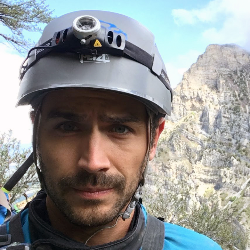Did vegetation change drive the extinction of Paranthropus boisei?
Authors:
David B. Patterson, Andrew Du, J. Tyler Faith, John Rowan, Kevin Uno, Anna K. Behrensmeyer, David R. Braun, Bernard A. Wood
Abstract:
Early evaluations of the masticatory morphology of Paranthropus (e.g., Robinson, 1954) pointed to it being an ecological specialist. This prompted a decades-long series
of evolutionary narratives suggesting that a narrow dietary niche prevented Paranthropus from successfully responding to environmental change in the Pleistocene (reviewed
in Wood and Strait, 2004). In a recent example, Quinn and Lepre (2021) draw from the eastern African carbon isotope record of pedogenic carbonates (i.e., paleosol isotopes)
to hypothesize that an increase in mean fraction woody cover (fwc) during the Mid-Pleistocene Transition (MPT; ∼1.3–0.7 Ma) influenced the extinction
of Paranthropus boisei. Enamel stable isotope data from P. boisei are consistent with its heavy reliance on C4 resources (Cerling et al., 2011a). Quinn and Lepre (2021) propose that this made P. boisei vulnerable to an abrupt—on geological time scales—increase in mean fwc and decrease in C4 biomass, which would have in turn increased competition for C4 resources, decreased P. boisei population size, and ultimately resulted in its extinction.
Quinn and Lepre (2021) variably characterize the mean fwc increase as pertaining to the whole Eastern African Rift System (EARS; e.g., their
section header, “Causes of the EARS C3 excursion”; Quinn and Lepre, 2021: 3) as well as to individual depositional basins within the EARS (e.g., “The Awash
(Ethiopia) and Turkana (Kenya) basins have the highest δ13CPC sampling resolutions across the MPT … and both record significant reductions in C4 vegetation… Olduvai (Oldupai) Gorge and Tugen Hills, yielding small samples from
the MPT interval… show persistent grassy vegetation structures”; Quinn and Lepre, 2021: 2). With respect to the larger scale of the EARS, we show here that the ‘C3 excursion’ presented by Quinn and Lepre (2021) is an artifact of an analysis that was overly influenced by data from two localities:
Dikika in the Awash and Nachukui in Turkana. Spatially uneven pedogenic carbonate
sampling resulted in a data set and an analysis that does not reflect paleovegetation
patterns across the currently known geographic range of P. boisei. Concerning their basin-scale characterization, we discuss why vegetation change
at this scale is insufficient to cause the extinction of a geographically widespread
species. At most, a change at this scale might cause a species' extirpation, but extinction
requires vegetation changes across most, if not all, of the localities occupied by
the species. Lastly, even if we accept that the C3 excursion presented by Quinn and Lepre (2021) reflects what was happening across all of the EARS, we show—via an analysis of the
distribution of mean fwc tolerated by modern mammals in African ecosystems—that the observed mean fwc increase during the MPT was unlikely to have had a significant influence on the extinction
of P. boisei.
This publication can be viewed here

